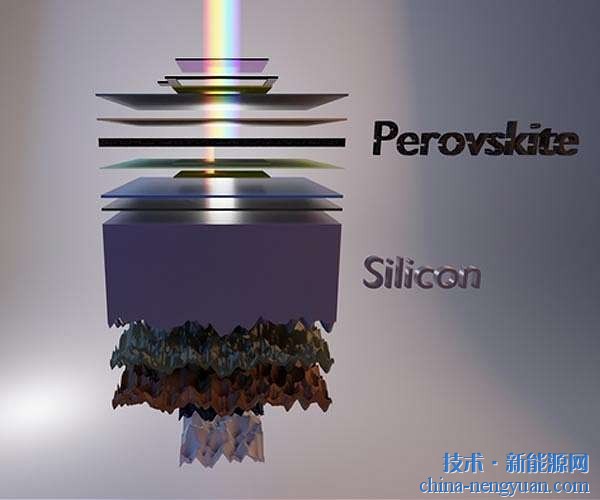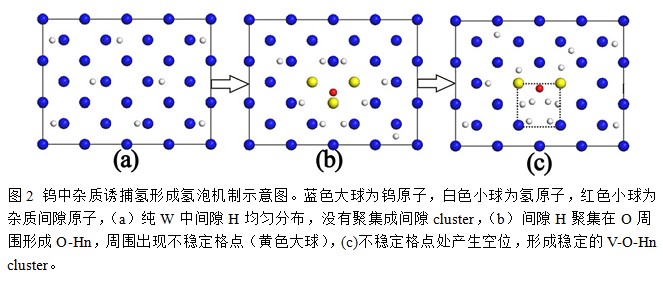 |

Recently, researchers from the Institute of Solid State Physics of the Hefei Institute of Physics of the Chinese Academy of Sciences, through cooperation with researchers from the Institute of Plasma Physics and Institute of Modern Physics, have made new progress in the computational simulation of the hydroenthalpy effect of plasma tungsten materials. The relevant research results were published in the fusion field journals Nuclear Fusion and Journal of Nuclear Materials.
Tungsten-based materials have become the most promising plasma-oriented materials (PFM) in international thermonuclear fusion reactors because of their high melting point, high sputtering threshold, low enthalpy retention, and low thermal expansion coefficient. During fusion service, PFM causes significant structural changes (such as H/He aggregation, long foaming, or even the formation of surface nanowire structures) under the irradiation of a strong beam low energy H/He ion flux, which reduces the thermal conductivity of the PFM surface. Rate increases the potential for surface melt evaporation and core contamination. On the other hand, tungsten will transform some new elements such as Re, Os and Ta under the irradiation of neutrons; simultaneously adding alloy elements (Re, Ta, Os, Ti and V) can effectively improve its brittleness and hardness. Therefore, the study of the interaction between the enthalpy change in tungsten and alloy elements and He appears to be particularly important. The researchers at the Solids Research Institute studied the interaction between 16 elements (including common enthalpy/alloying elements) and He and the diffusion properties of He around the impurity elements based on first-principles calculations. It was found that the trapping radius of interstitial atoms (Be, C, N, and O) is 2 times that of the surrogate atoms, and the capture effect of He on He is more significant. The binding energy between the substitutional atom and He is proportional to the density of the He atoms, ie He is more likely to accumulate at lower charge density (see Figure 1). Diffusion calculations show that the migration and diffusion behavior of He at Re/Ta is almost unaffected, while Os, Ti, and V have a significant capture effect on He. Comparative analysis shows that Ta is more suitable as an alloying element of tungsten than Ti, Os, Re, and V. This provides a new idea for the design of high-performance tungsten alloys. The relevant research results were published in Nuclear Fusion (2013, 53, 073049).
Aiming at the formation mechanism of hydrogen bubbles in tungsten, it was found that the introduction of interstitial impurity atoms could induce local lattice distortion, which led to the decrease of the stability of the surrounding lattice sites and the formation of vacancies in this region. The interstitial impurity atoms can serve as hydrogen trap sites, forming defect clusters with interstitial impurity atoms and multiple interstitial hydrogen atoms. The formation of this defect group will significantly weaken the interaction between the surrounding tungsten atoms, and even lead to instability of certain lattice sites, a necessary condition for spontaneous formation of vacancies. Based on the results of the calculations, we tentatively proposed a hydrogen bubble nucleation mechanism (Figure 2): Hydrogen atoms are accumulated around gap impurity atoms (such as oxygen) to cause unstable lattice sites around, and new vacancies are formed at this site and further captured. Many hydrogen atoms form vacancy-impurity-hydrogen clusters. The cluster forms new vacancies in its weak bond region, trapping more atoms and eventually forming hydrogen bubbles. The results of the relevant research were published in the Journal of Nuclear Materials 2013 (433, 357-363).
The above research work was supported by the International Thermonuclear Experimental Reactor (ITER) Program of the Ministry of Science and Technology, the National Natural Science Foundation of China, and the Chinese Academy of Sciences.
Expanded metal is sometimes considered an alternative to sheet metal or wire mesh. It combines some of the best features of both-providing a material that is stronger than thin wire mesh and has better air flow and drainage than sheet metal.
Expanded Metal Mesh,Element Expanded Metal Mesh,Aluminum Expanded Metal Mesh,Ss Standard Expanded Metal Mesh
HEBEI KAYI BUILDING MATERIAL TECHNOLOGY CO.,LTD , https://www.kayigrating.com